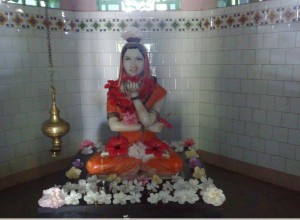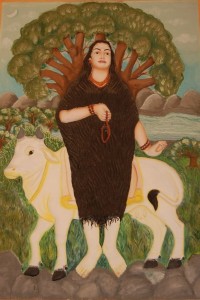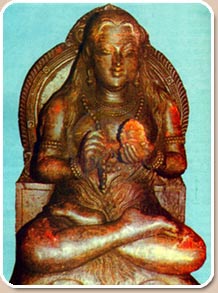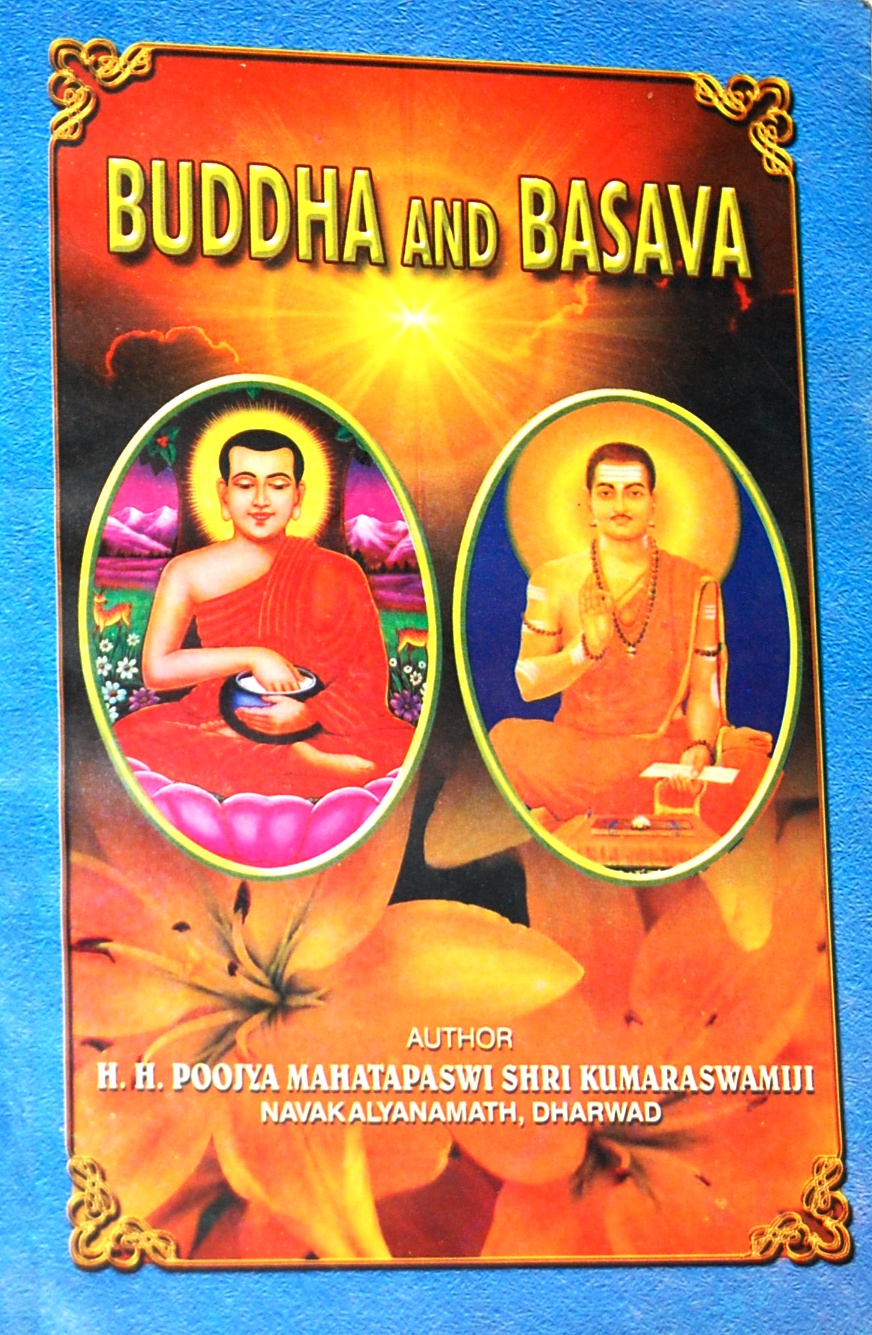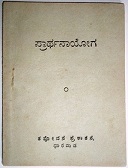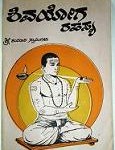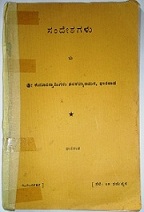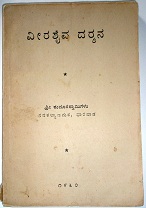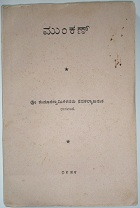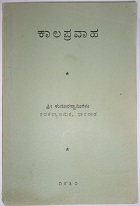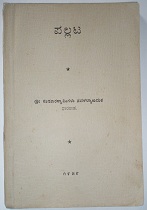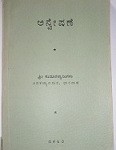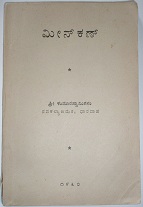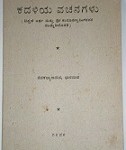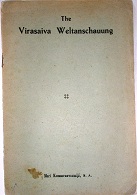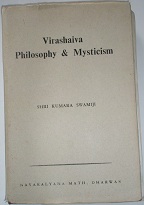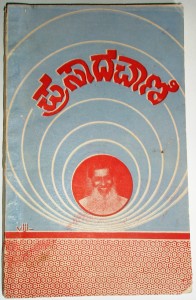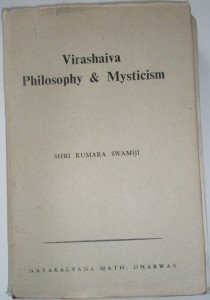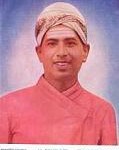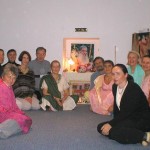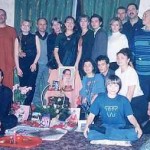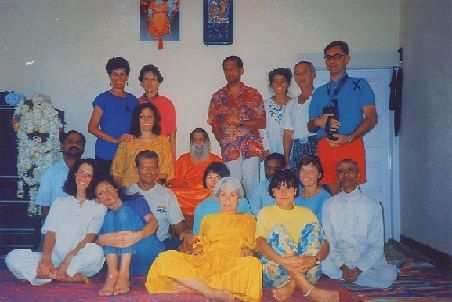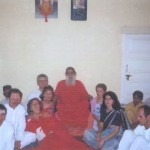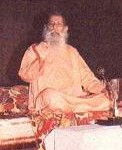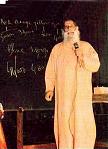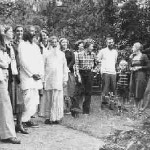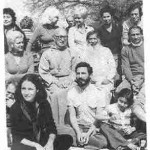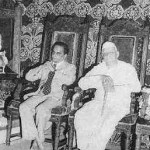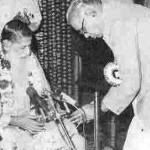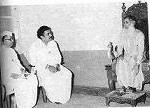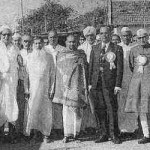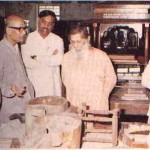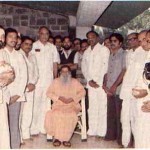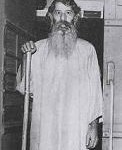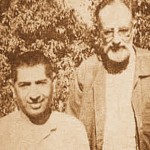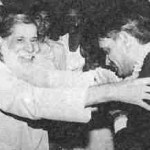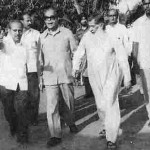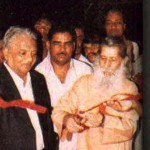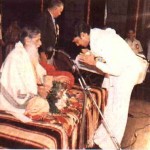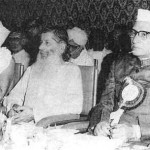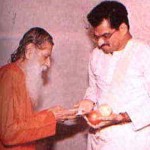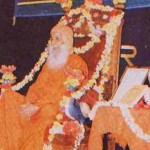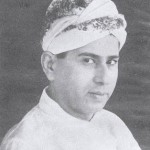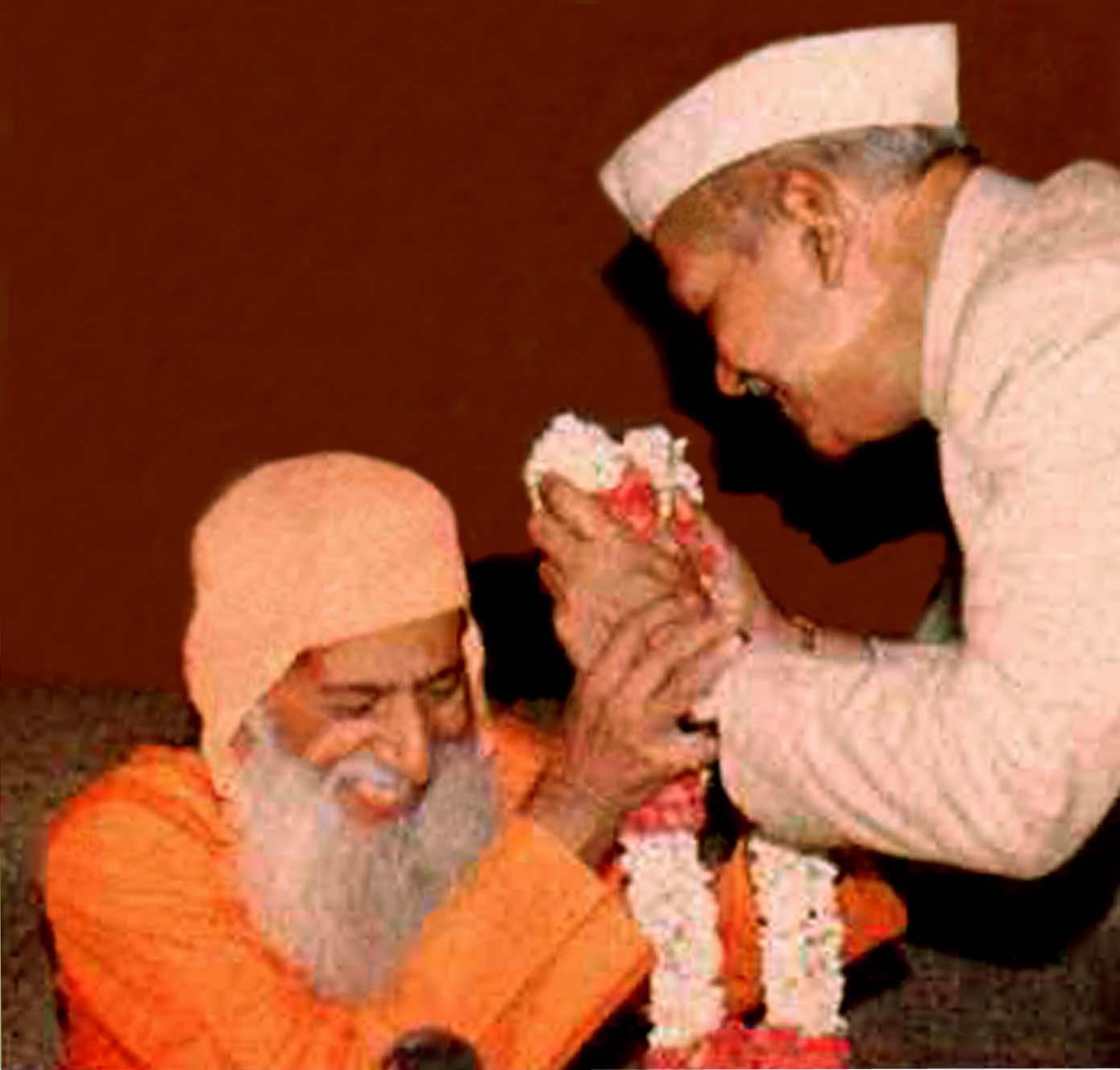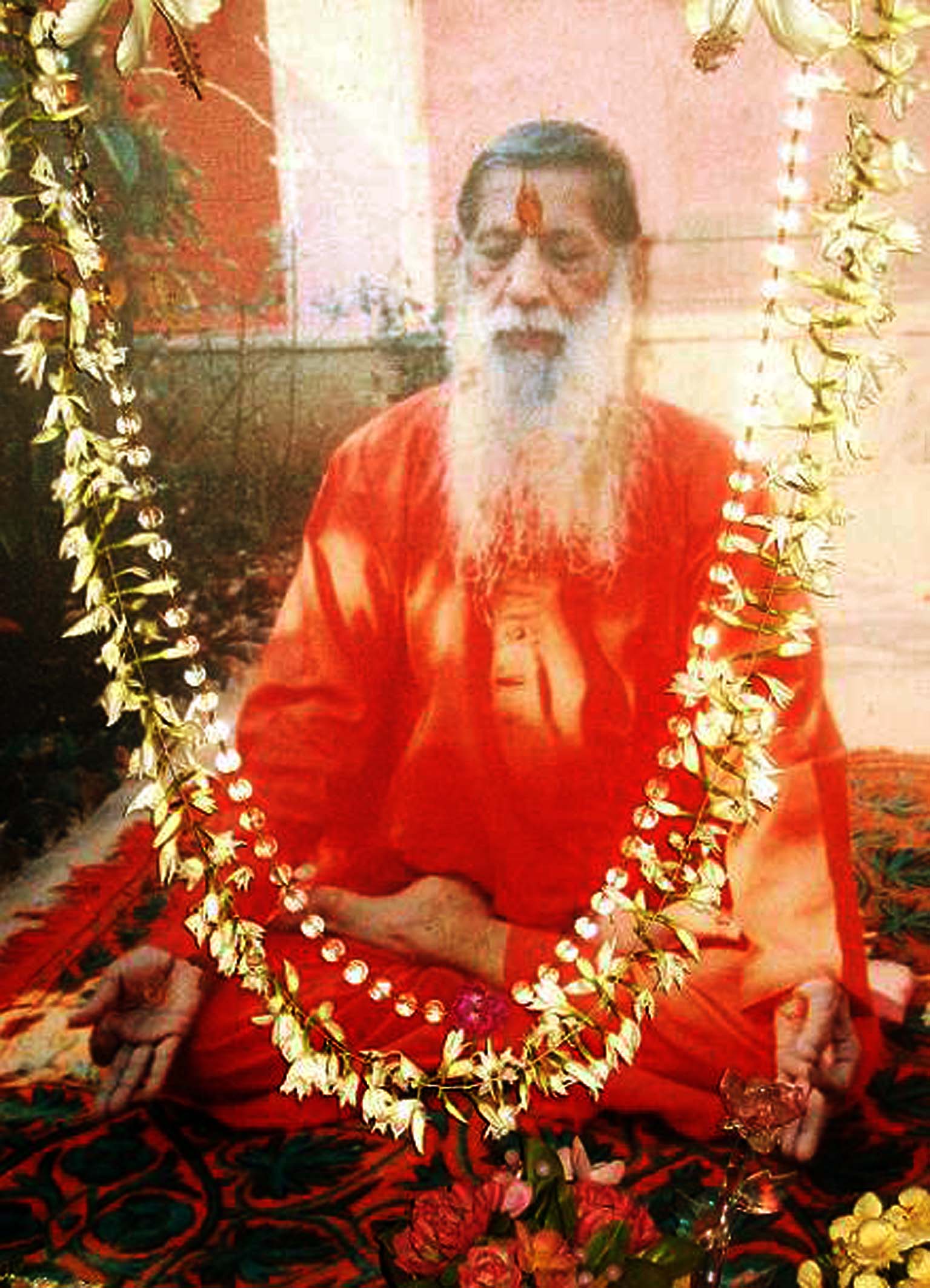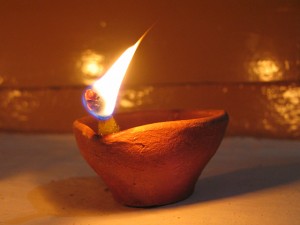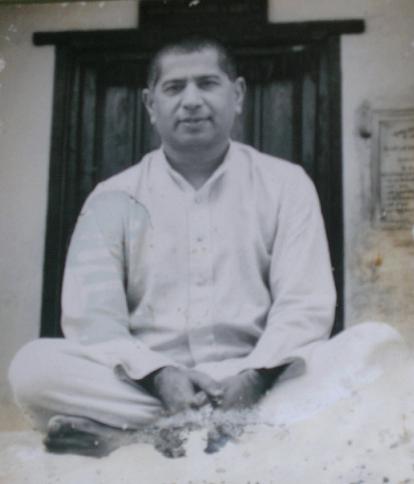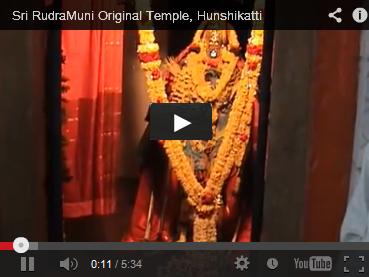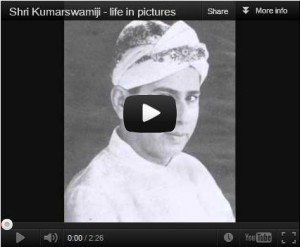The ideal of the great contemplatives, the end of their long education is to evolve a large impersonal personality and to heighten sympathy into constant experience of world-oneness; is to become the modes of the Infinite. Filled with an abounding sense of the Divine Life, of ultimate and adorable Reality, the mystics develop the most profound and vital methods of psychological self-discipline and self-development so that the mental and the psychical life of man may express the Divine Life through the utmost possible expansion of its own richness, power and complexity. And the saying of Akka Mahadevi is a beautiful monograph of the method of psychological discipline and self-development through the contact of the Divine Personality. The method finds itself reflected in five stages, according to her version, namely Kara-sthala, Mana-sthala, Bhava-sthala, Jnana-sthala and Sarvanglinga-sthala. The psychological method as adumbrated by Akka Mahadevi is a Pentagram – five pointed path designed to achieve mystic realization.
” The glorious Divine person had scarcely placed his hand upon my head when the worldly bondage of mine disappeared. He made me like himself. Behold! He manifested himself by annihilating isolation between myself and Himself. The greater divine Image, Mahalinga, that was in the palm of his hand, He established in the palm of my hand. The great divine image of the palm of my hand, He established in the inner chamber of my mind. The great divine image of the inner chamber of my mind, He established in the inner-most recess of my heart. The great divine image of the inner-most recess of my heart, He established in the super-mind or in the illuminating reflex of my inner mind. The great divine image of the super-mind, He established in the super-conscient so that the divine consciousness permeated my body both within and without. Such is the working of my glorious Lord Chenna Mallikarjuna.” — Akka Mahadevi.
12th century Veerashaiva Mystic Saint Akkamahadevi
Artists opine that imagery is the vital need for the complete satisfaction of the human soul. Bare knowledge of facts gives only information but a living imagery brings about a complete satisfaction to the faculty of imaginations. In the store house of imagination not all the images but only those that have touched our vital chords of life, that have established a close contact with our personality, that are significant for their own sake and that add wealth to out consciousness thus making our life richer for us, are stored. These interestedly significant and immensely rich images find their permanence in our minds through the selective process of intellect. It is this selective process of reason which enables us to establish a living and real contact with the world through the range of our artistic emotions. Hence the artistic emotionallization of life is the end which the artists have set before themselves/ This selective process trans-values only those images that have permanent interest to our minds, that help us to grow in the delicate net-work of our temperament but rejects those that fail to have any response to their insistent calls from us. This process of selection and rejection is genuinely human, supremely artistic. This is a step on the right road to the divinization of life.
But the process of divinization of life is to be had in the correct and comprehensive manner of establishing the closest contact with the Divine Personality. Now-a-days, a truer insight has restored personality to its throne in almost all the departments of life. In the last century it was generally the usage to talk in terms of ‘Laws and tendencies and movements’, and it all sounded very detached, impersonal and tremendously scientific. Economics was branded as a dismal science just because the existence of personality was sedulously ignored. It was John Ruskin who insisted that behind economic laws were living personalities and made men realize that, whatever generalizations you might make, humanity was involved. Henry George made economic abstractions come to life. In his Progress and Poverty he made it clear that any science divorced from human life would soon turn out to be a Gordian Knot, the paradox of Sphinx and modern civilization had had to face this problem. We may have advanced beyond or discarded as fallacious the economic or political theories of these writers; but we are indebted to them for re-discovering and re-emphasizing the fact of personality which is too easily over-looked in an age of mass-movements and mass-production. In consequence of this revival of interest in personality, psychology has come to the fore-front to study personalities; the child, the adolescent, the abnormal type, the worker – all are weighed in new scales only to arrive in the end at a decision, that it is not the principle but the personal factor that sways the human life.
As in science so in art, nay, even in trade and industry it is personality that counts. What then is personality? It is more easily detected than defined. We may observe the difference between two musicians. They may play the same composition correctly, but one may be faultless and flat and un-inspiring while the other may be putting something of himself into it which is not in score. We cannot define it, but we call it the players temperament or Personality. It is this peculiar and elusive temperament that is called ‘Personal magnetism’, which plays a very important role in religion. It will be readily granted that this has its perils also. More dangerous is the exploitation of personality for unworthy ends and the foolish habit of attaching undue importance to particular personalities, which encourages and is fostered by the unscrupulous or unworthy that thrive upon it. Worst of all is the undisciplined devotion to human personality in some rather unhealthy forms of religion. It does not mean that there is no place for personality in religion but it is clear that place must be formed for personality in religion; otherwise, we shall be leaving out all that is most rich and vital in experience. The development of religions points unmistakable to the truth that the place of personality in religion is the central place. If we consider the pagan religions, we will be convinced with one profound truth, namely, that man cannot be satisfied to attribute natural phenomena to mechanical laws but seeks to relate them to personal agencies. The rivers, rocks and trees were thronged with personal beings, who in some way were responsible for natural activities. This polytheism was only a step on the road to a right belief in God. The next step was taken by monotheism, the belief in one God, who is a just God, a loving God that controls and directs nature by this personal will. This imperative need of discovering personal agencies behind the natural phenomena drove irresistibly man’s search after the final truth until it culminated in the revelation of a God manifest tin the flesh. To manifest God in one’s own flesh and bone, that is, to divinize the whole of life is the alpha and omega of real mysticism and Yoga.
Mysticism explains the principles of metaphysics in terms of personality; mysticism means relationship to a person. When we have said that we have only opened a fresh problem, how is that relationship to be made real? Virashaivism has hit upon a method of establishing, a living and close contact with the Divine Person by placing the Ishtalinga or the divine image upon oneself; Ishtalinga represents the Divine Person or rather it is the Personality represented. It is in the words of Virashaiva mystic ‘Grace’. “The grace really means an all-pervading presence and peace central to all existence. So long as one is thinking of the form as a thing, however holy, sacred or symbolic, it will profit him nothing; but directly one passes to the identification with the presence, one knows he is coming in contact not with an object but with a personality. Through contact with the Divine Personality one accepts all and rejects none; he takes into himself all joys, sorrows, thoughts, aims and hopes of the world around us and returns them enriched and transmuted into a sublime and serene commerce. If growth is possible by contact with personality, the contact should then range, as Akka Mahadevi observed, from the spiritual to the material, as matter and spirit are the base and summit of life. It is this synthetic vision of life combined with inner-most heartfelt aspiration of possessing God not only in the spirit or psyche, but even in the palm of hand, so that the whole of the body may be infused with God-consciousness both within and without, that compelled the Virashaiva to feel sincerely, think logically and see comprehensively the imperative need of wearing upon himself the Divine image or Ishtalinga which has brought him the nickname of Lingayata.
Linga-dharana or wearing of Linga is the distinctive mark of the Virashaivas. But Linga, as interpreted by the Virashaiva mystics, is the Supreme, the source and support of all existence, the ground and goal of all evolution. Life is therefore the ultimate Reality from which all beings are born, by which those that are born, live and move and in which they enter after dissolution. It is for this reason that the etymological meaning of Linga is
“| Liyate yatra gamyate iti Lingah.|”
Sometimes the word Linga is derived from the root Gama alone meaning to go deep, to penetrate in, to understand as in the case of Adhigama. Hence Linga means the object by the Yogi and the object is not else than the highest Godhead. In the Vedic terms Linga is Pusan, ekarse yama surya prajapati |, a linga is a Pusan, the fosterer or increaser, for “He enlarges and opens man’s dark and limited being into a luminous and infinite consciousness; He is Ekarse, the sole seer, the seer of the oneness and knower of the self and leads the Yogi to the highest sight; He is Yama, the controller or ordainer, for He governs man’s actions and the manifested being by the direct law of truth, Samadharma and therefore by the right principle of our nature; He is Surya, the divine illuminator, who exceeds mind and forms the pure self-luminous truth of things. His rays are the thoughts that proceed luminously from the truth but become deflected and distorted, broken up and disordered in the reflecting and dividing principle, mind. A luminous power proceeding from the Father of all existence, Prajapatih, He reveals in Himself the divine Purusa of whom all beings are the manifestations.”
To the Virashaiva mystic then, Linga is the absolute Truth, the light of Supreme consciousness, the abode of infinite delight. If Linga is the Supreme, the Infinite, naturally a question suggests itself to the thinking mind, why is that symbol round the neck of a Virashaiva? Yes, it is a symbol, but symbolic of what? Of the universe! Why is it symbolic of the universe? Because God pervades the universe and yet far exceeds it; he is both immanent and transcendent. He is at once the changing movement and the changeless Master. Let one read the wise saying of the ancient seer:
“Tade-jati tannejati taddure tadvantike tadantarasya sarvasyetadu sarvasyasya bahatah|”
“It moves and yet it moves not, it is far and (at the same time) near. It is located within all, and yet, it resides outside all these.” The universe is a system of moving or changing things, but this change is real and not illusory since the change is always with reference to a centre. If change were merely an illusion there would have been no need for a background. Because of the insistence of the illusory nature of the universe Buddhism ended in Nirvana. But Virashaivism has the knack to see that every change is a change with reference to a centre. A changing substance cannot be supported by an equally changing substratum. Virashaivism calls the changing substance Chara, the dynamic, and the unchanging substratum, Sthira, the static: and between the two it intuits coherent relation. “The mystics,” says Evelyn Underhill, “have resolved the perpetual opposition between the personal and impersonal, the transcendent and immanent, the static and dynamic aspects of the Divine Nature, between the Absolute of philosophy and the sure true friend of devotional religion. They have done this not by taking these apparently incompatible aspects, one after the other but by ascending to a height of spiritual intuition at which they are, as Ruysbroeck said, “melted and merged in the unity” and perceived as the completing opposites of a perfect whole.”
“God is here felt to be not the final abstraction, but the one actuality. He inspires, supports, indeed inhabits both the devotional, conditional finite world of becoming and the unconditioned, non-successional infinite world of being; yet utterly transcends them both. He is the Omni-present Reality, the all-pervading within whom ‘ the worlds are being hold like beads.’ Considered as Immanent spirit, He is the mind within the mind. The need felt by mystics for both these ways of describing reality is a proof of the richness and balance of their spiritual experience, which neither cosmic nor anthropomorphic symbols, taken alone could express.”
12th century Veerashaiva Mystic Saint Akkamahadevi
So the Virashaiva mystic says that one should move from the form in the formless, from the definite to the indefinite, from the known to the unknown. In thus moving from the finite to the infinite there is a formidable obstacle in the path of the mystic. The obstacle in the pilgrim’s path is not consciousness in general, but self-consciousness, that is, the consciousness of the Ego. The Ego is the limitation, that which opposes itself to the Infinite. For the infinite by its inherent self-formative Energy can at once dwell in the consciousness of multiplicity and relativity as well as in the consciousness of unity and identity and is therefore not bound by ignorance. But the Ego, being unable so to dwell, identifies itself with the object in the movement absorbingly, to the apparent exclusion of the knowledge which remains behind veiled, at the back of the mentality. The movement of mind in nature is thus able to conceive of the object as reality and the inhabitant as limited and determined by the appearance as of the object. It conceives of the object, not as an immananation in one of its frontal appearance, but as itself a separate existence standing out from the cosmos and it similarly conceivers of the inhabitant. This is the illusion of ignorance which falsifies the realities. The illusion is called Ahankara, the separative ego-sense, which makes each being conceive of itself as an independent personality. The result of this separation is an inability to enter into harmony and oneness with the universe and a consequent inability to possess and enjoy it. The mystic therefore educates the Ego to transfer its center of self-activity to an organ of revelation of the Infinite Being and to live a life of affection for and one-ness with the universe. Hence the ideal of the great contemplatives, the end of their long education is to evolve a large impersonal personality and to heighten sympathy into constant experience of world-oneness; is to become the modes of the Infinite. Filled with an abounding sense of the Divine Life, of ultimate and adorable Reality, the mystics develop the most profound and vital methods of psychological self-discipline and self-development so that the mental and the psychical life of man may express the Divine Life through the utmost possible expansion of its own richness, power and complexity. And the saying of Akka Mahadevi is a beautiful monograph of the method of psychological discipline and self-development through the contact of the Divine Personality. The method finds itself reflected in five stages, according to her version, namely Kara-sthala, Mana-sthala, Bhava-sthala, Jnana-sthala and Sarvanglinga-sthala. The psychological method as adumbrated by Akka Mahadevi is a five pointed path designed to achieve mystic realization.
Generally psychology aims at rendering our knowledge of human nature more exact and more systematic in order that we may control ourselves more wisely and influence over fellow-men more effectively. Hence the most satisfying answer of psychology seems to be that it should help us to a better understanding of human nature. But human nature has its basis as well as its summit; it has its basis in the sub-conscient or in the instinctive energy as the modern psychology observes, its summit in the super-conscient. Modern psychology looks all right at the base but looks askance at the summit. Sub-conscient and the super-conscient are but the twin formulations of the same nature. The key-note of the sub-conscient is Life, the key-note of the super-conscient is Light. In the sub-conscient knowledge or consciousness is involved in action, for action is the essence of life. In the super-conscient action re-enters into light and no longer contains involved knowledge but is itself contained in a supreme consciousness.
Between the sub-conscient and the super-conscient intervenes the intuitional knowledge, the foundation of which is conscious identity between that which knows and that which is known. “It is that state of common self-existence in which the knower and the known are one through knowledge.” Modern psychology deals admirably with the subtleties of the Libido or the Elan vital, that is, the sub-conscient which runs through the triple activities of the physical, mental and vital; but it leaves out of account the intuitional and the super-conscient as being foreign to its treatment. Indian psychology, on the other hand, looking at human nature not piece-meal but comprehensively, gives a correct and complete view of Life ranging from the sub-conscient to the super-conscient. In the saying of Akka Mahadevi, the Kara-sthala, Mana-sthala and Bhava-sthala are the ambit of the sub-conscient. Jnana-sthala pertains to the intuitional knowledge, whilst Sarvangalinga-sthala is the super-conscient par excellence.
Kara-sthala is of the action and of the physical plane. Most of our actions are done sub-consciously. The saying that ‘Practice maketh perfect’ is merely an indication of the sub-conscious mind which learns to do the task easily, and by so doing, takes it off our conscious hands. For the sub-conscient is a reservoir of unlimited tireless force, it is the mine of nature, it possesses extraordinary powers and intelligence but no inspiration. The sub-conscious mind, if led aright, is a very good instrument that reduces all repeated thoughts and actions into habit which, in course of time, become part and parcel of the very life. Every time a bad action is indulged in, wonderful changes take place in the nervous system, profound alterations are made in the brain centers and energy becomes stored up on certain cells so as to make it easier to do the wrong act on a future occasion. It is equally true that every time a good action is done, similar changes, but in a reverse direction, take place which prompt the occurrence of the same action, easier in the future. Thus by conscious right action, a good habit is formed which becomes, in course of time, the character that affects the whole of life.
The aim of Kara-sthala. is the building of character; character, as the psychologists opine, is the system of directed conative trends. Character of the finest type is that which is complex, strongly and harmoniously organized and directed towards the realization of higher goal or ideal. It is true that we harbour primitive desires and primordial impulses but these can be transmuted into noble action and high achievement by directing the thought to higher and better things. For example, the power of sex, that is, Retas becomes transformed into brain power, that is Ojas, if the thought and attention are completely transformed from sex to intellectual pursuits. If however the thought is allowed to dwell upon sex or passion, then the kingdom becomes divided against itself and man begins to drift towards the abyss. The word man comes from the root ‘Mana – to think,’ and the man is the thinking being. Thought is therefore the distinctive mark which raises man far above the animal kingdom. Right thought then is necessary to right conduct if the training of right though is the objective of Mana-sthala. “Thought is not essential to existence nor its cause but it is an instrument for becoming. I become what I see in myself. All that thought suggests to me, I can do; all that thought reveals in me, I can become. This should be man’s unshakable faith in himself, because God dwells in him.”
Boat ride to Akkamahadevi’s cave Akkamahadevi cave and statue at Sri Shailya
We may see by this that it is not possible to overcome evil habits by fighting them; for the more we fight them, the stronger they become. The way of escape is not by fighting evil or wrong habits but by turning the thought and attention to better and higher things. Whatever we focus our attention upon or whatever it is that we think to idealize, our sub-conscious mind endeavours to actualize and make real in our life. It is for this reason that the will must be used not to fight the habit but in raising and directing the thought to something higher and better things. For aspiration is the intense application to acquire moral sentiments such as forgiveness, kindness, justice, etc. It is the longing for heavenly things – for righteousness, compassion, purity and love as distinguished from desire, which is the longing for earthly things, — for selfish possessions, personal dominance, low pleasures, and sexual gratifications. When the rapture of aspiration touches the mind, it becomes renewed and its thoughts are transmuted into inspired talks. For aspiration is the twin angel to inspiration, it unlocks the gates of the heart which is the seat of finer and tender emotions that lead the way to peace. To thirst for righteousness, to hunger for the pure life, to enter the path of peace by rising in holy rapture on the wings of angelic aspiration – this is the promise of the Bhava-sthala; this is the right road to wisdom or intuitional knowledge. “Mental forces like molecular, have their opposite poles or modes of action; and when the negative pole is, there also is the positive. Where ignorance is wisdom is possible; where passion abounds peace awaits; where there is much suffering, much bliss is near. Sorrow is the negation of joy; sin is the opposite of purity; evil is the denial of good. Where there is an opposite there is that which is opposed. The adverse evil in its denial of the good, testifies to its presence. The one thing needful, therefore, is the turning round from the negative to the positive; the conversion of the heart from impure desires to pure aspirations; the transmutation of the passional forces into moral powers.”
The purified action, the enlightened mind, the illumined heart open the self to a new, a higher, a wider mode of consciousness which is a distinctive mark of the super-mind. We have already seen that the sub-conscious mind, thought it be wonderful, is merely instinctive lacking originality and inspiration. But all inspiration and originality come from the super-mind; all poets and powerful writers draw their inspiration from this source. One who is able to use this higher mind develops the divine quality of originality. If even a person is to bring forth a new idea that shall enrich humanity and add to the common good, it must come through this super-mind. For what we get from the sub-conscious mind is the outcome of facts and knowledge supplied to it; what we get from the super-mind is direct inspiration from higher planes. Rising into the higher plane of the super-mind, man is lifted above inharmony and disturbance. Hence in this higher realm the Truth is viewed at once as the essence and the image. When the Truth is thus realized and known, not as an opinion or an idea but as an experience, as a possession, then calm vision is acquired and tranquil joy abides through all vicissitudes. The life here is founded not upon fleeting impulses but upon abiding laws, whereby it is ruled not by passions but by principles. In its clear and calm atmospheres the orderly sequence of all things is revealed, so that man is able to know Truth and to see things as they really are, and not as they falsely appear to the senses.
The super-mind is then only accessible to him who is more delicately attuned to its finer vibrations and one who is properly attuned becomes a fit recipient of divine wisdom or Jnana. This is the secret of Jnana-sthala. In this stage the mystic intuits all things by direct knowledge, since all knowledge springs from within and his self learns to universalize itself transcending the limitations of the sense-mind and the shakes of egoism. This deep and continuous urge of the soul to universalize itself drives it towards the integrality of the higher Nature which endows the soul with the most extraordinary force of accomplishment combined with an immense drift of creative imagination and original thought that marks the prophet. Such a prophetic soul can read the will of God, the logic of events and can put itself in tune with the universe and divine Force that manifests itself in the mighty working of that Time-Spirit.
Lastly the soul ascends from the Jnana-stala to Sarvanga-linga-sthala, the state of the super-conscience par excellence. It is the realm of an ineffable Light and infinite Delight where the soul becomes itself steeped in the Supreme, brining about a Yoga or union which is conveyed by the simile of a pool of salt water in which every particle is penetrated by the salt. This all embracing but complex unity with the Supreme secretly but divinely compels the soul to look up from its cosmic consciousness to the transcendental and to derive from that all its sense of being to movement of works. In this luminous transcendental state the sense of being is only spontaneous outflow from the Supreme; the movement of works is only a divine movement of the Eternal. This super-conscient or the transcendent state, therefore, leads the soul to an abiding peace and an all-embracing grace which can not only be enjoyed for himself but communications to other. It is this power of communication either by word or deed or by thought or will that marks the real state of the Sarvanga-lingin, that is, the Divine person who has mastered the divine Art of Life. He is, as it were, a dynamo of divine electricity which sends its currents thrilling and radiating through mankind, so that the Soul of humanity may be transfigured by its mere inflow.
This article – Pentagram of Akka-Mahadevi – is taken from H.H.Mahatapasvi Shri Kumarswamiji-s book, ‘Virashaiva Philosophy & Mysticism’.







